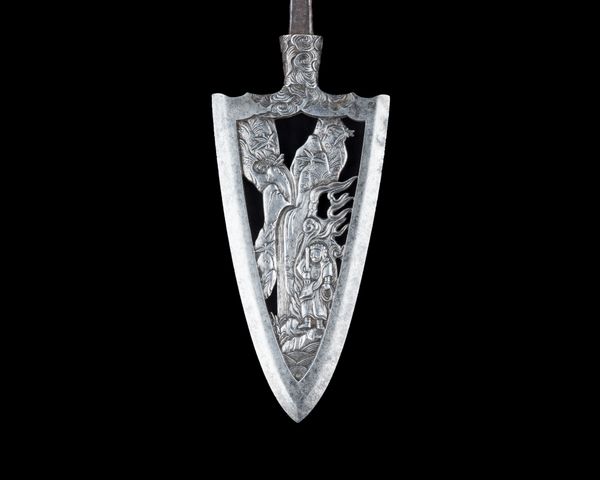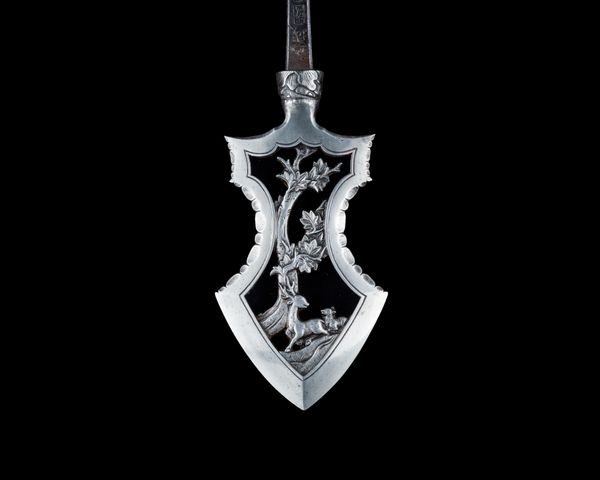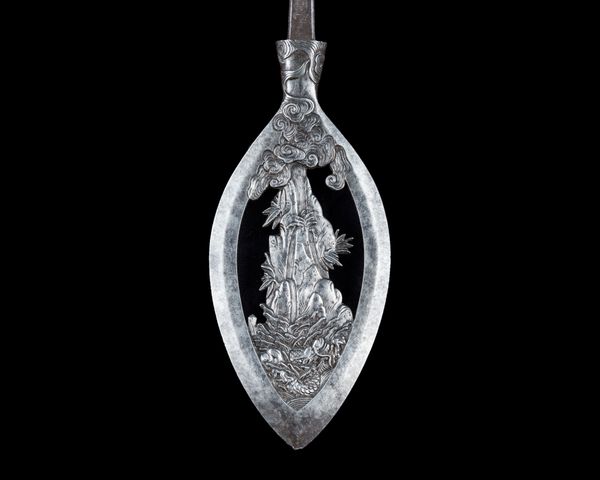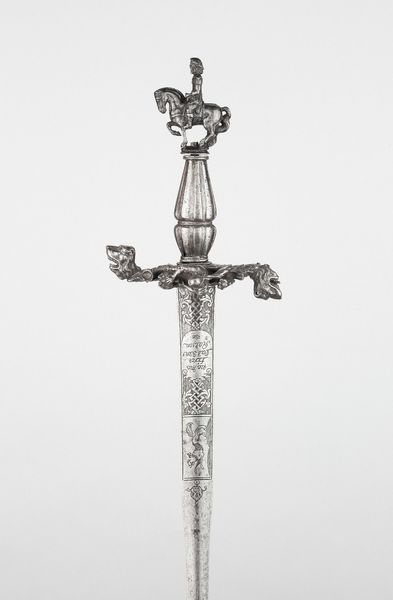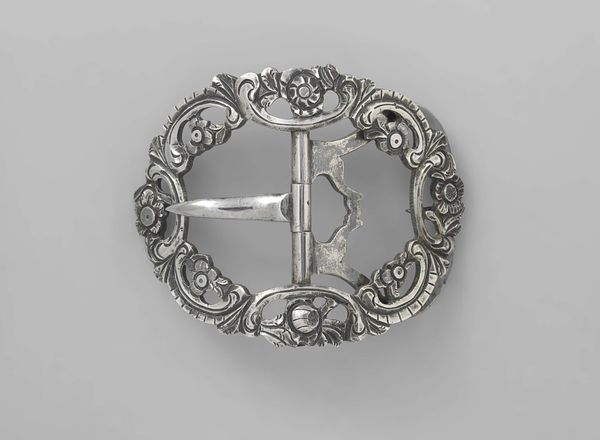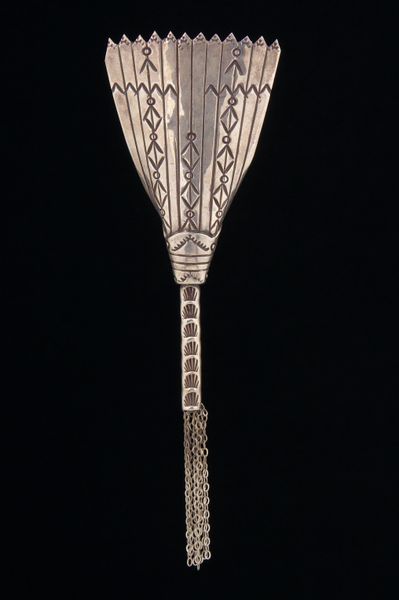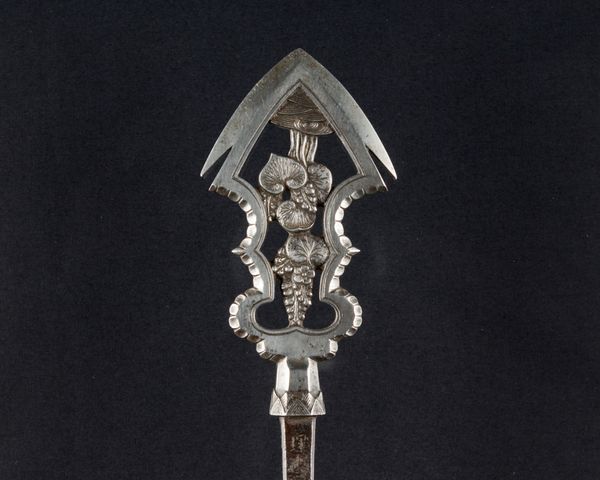
carving, metal, relief, sculpture
#
carving
#
metal
#
sculpture
#
asian-art
#
relief
#
japan
#
geometric
#
sculpture
#
statue
Dimensions: L. 12 5/8 in. (32.1 cm); L. of head 5 3/4 in. (14.6 cm); W. 2 5/8 in. (6.7 cm); Wt. 6.7 oz. (189.9 g)
Copyright: Public Domain
Curator: I find this *yanone*, or ceremonial arrowhead, crafted around 1645 by Umetada Motoshige, incredibly striking. It’s currently part of the Metropolitan Museum of Art’s collection. Editor: It does command attention. My first thought is that the scale seems almost at odds with its purported function. It’s so ornate and seemingly fragile, which renders it visually compelling. Curator: Its purpose was never truly martial. In Edo period Japan, *yanone* were presented to shrines as offerings, embodying prayers for victory and protection. They signify not violence itself, but rather the hopes tied to military success. Editor: Right, the dragon motif seems key. It spirals dramatically across the arrowhead’s surface, weaving in and out of meticulously rendered clouds, doesn't it? I can see an undercurrent of dynamism in this high-relief sculpture. Curator: Absolutely. The dragon represents power, wisdom, and good fortune within East Asian cultures. Notice, too, the triple vajra or *mitsuko-dokko* at the bottom—a Buddhist symbol for indestructibility and spiritual strength, providing a fascinating counterpoint. Editor: So it presents itself as a fusion of cultural narratives, religious aspirations and societal norms? Curator: Precisely! The formal precision of the geometric arrowhead grounds the mythical quality of the sculpture, tethering abstract hope to something tangible. What I find interesting is its ability to reflect broader socio-political conditions of the time period as well. Editor: True, but its composition does seem to embody those complex dichotomies and how cultures find shared language. That alone makes this ceremonial arrowhead so visually intriguing to me. Curator: For me it is a poignant symbol reflecting the values placed upon faith and power. I believe that thinking critically about this piece encourages a richer, more layered perspective on Japanese art. Editor: I think I appreciate how the *yanone's* stark symbolism is still relevant and potent in this world of perpetual strife.
Comments
No comments
Be the first to comment and join the conversation on the ultimate creative platform.
